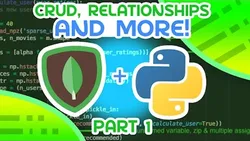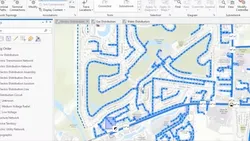
MongoDB Python Tutorial 
This tutorial series provides an in-depth look at how to use MongoDB and Python together. It covers topics such as CRUD operations, relationships, schema validation, advanced queries, full-text search with Atlas Search, and more. It is a comprehensive guide for anyone looking to learn how to use MongoDB and Python together. ▼
ADVERTISEMENT
Course Feature
![]() Cost:
Cost:
Free
![]() Provider:
Provider:
Youtube
![]() Certificate:
Certificate:
Paid Certification
![]() Language:
Language:
English
![]() Start Date:
Start Date:
On-Demand
Course Overview
❗The content presented here is sourced directly from Youtube platform. For comprehensive course details, including enrollment information, simply click on the 'Go to class' link on our website.
Updated in [February 21st, 2023]
1. You can learn how to use MongoDB and Python to create, read, update and delete (CRUD) data.
2. You can learn how to use MongoDB and Python to create relationships between data.
3. You can learn how to use MongoDB and Python to validate data schemas.
4. You can learn how to use MongoDB and Python to perform advanced queries.
5. You can learn how to use MongoDB Atlas Search to perform full-text searches.
[Applications]
After completing this MongoDB Python Tutorial, learners can apply their knowledge to create and manage MongoDB databases, create and query documents, and use MongoDB Atlas Search to perform full-text search. They can also use MongoDB's schema validation to ensure data integrity and use advanced queries to retrieve data from MongoDB. Additionally, learners can use MongoDB's relationships to model data and create complex queries.
[Career Paths]
1. MongoDB Developer: MongoDB Developers are responsible for designing, developing, and maintaining MongoDB databases. They must have a strong understanding of MongoDB's features and capabilities, as well as the ability to write efficient queries and optimize performance. Developing trends in this field include the use of cloud-based MongoDB solutions, such as MongoDB Atlas, and the use of NoSQL databases for big data applications.
2. Python Developer: Python Developers are responsible for writing and maintaining code in the Python programming language. They must have a strong understanding of the language and its features, as well as the ability to write efficient code. Developing trends in this field include the use of Python for machine learning and artificial intelligence applications, as well as the use of Python for web development.
3. Data Scientist: Data Scientists are responsible for analyzing large datasets and extracting meaningful insights from them. They must have a strong understanding of data analysis techniques, as well as the ability to interpret and communicate the results of their analysis. Developing trends in this field include the use of machine learning and artificial intelligence to automate data analysis, as well as the use of big data technologies to process large datasets.
4. Database Administrator: Database Administrators are responsible for managing and maintaining databases. They must have a strong understanding of database technologies, as well as the ability to troubleshoot and optimize performance. Developing trends in this field include the use of cloud-based database solutions, such as MongoDB Atlas, and the use of NoSQL databases for big data applications.
Course Provider

Provider Youtube's Stats at AZClass
Discussion and Reviews
0.0 (Based on 0 reviews)
Explore Similar Online Courses

ArcGIS Utility Network

The Beginners Guide to Self-Publishing (Nonfiction)

Python for Informatics: Exploring Information

Social Network Analysis

Introduction to Systematic Review and Meta-Analysis

The Analytics Edge

DCO042 - Python For Informatics

Causal Diagrams: Draw Your Assumptions Before Your Conclusions

Whole genome sequencing of bacterial genomes - tools and applications

Searching for Text in MongoDB

Learning MongoDB - NoSQL database


Start your review of MongoDB Python Tutorial